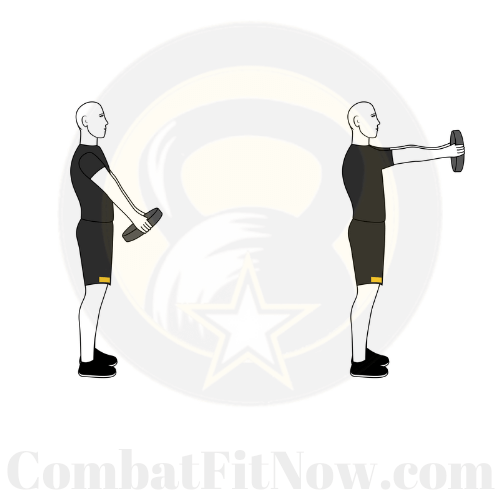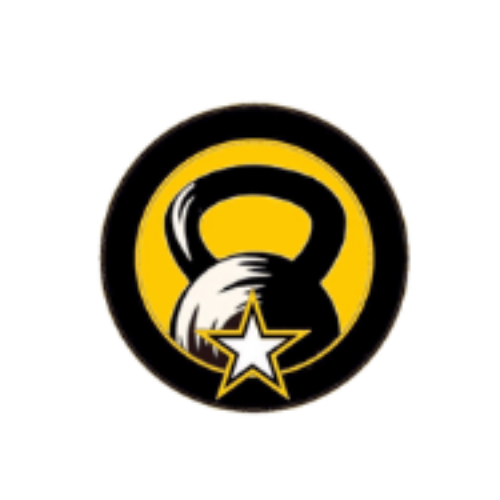front shoulder raises with a plate are a great exercise to target the anterior (front) part of your shoulders. Here’s a step-by-step guide on how to perform front shoulder raises with a plate:
Video Instructions On How To Do Front Shoulder Raises with Plate
Muscles Targeted:
- Anterior Deltoids (Front Shoulders)
- Upper Trapezius
Equipment Needed:
- Weight plate
Instructions:
- Starting Position:
- Stand up straight with your feet shoulder-width apart.
- Hold a weight plate with both hands in front of your thighs.
- Ensure that your grip is firm and secure, with your palms facing your body.
- Body Alignment:
- Maintain a neutral spine and engage your core for stability.
- Relax your shoulders and keep them away from your ears.
- Lift the Plate:
- Slowly lift the weight plate directly in front of you, keeping your arms extended.
- Focus on using your shoulder muscles to lift the weight, avoiding excessive momentum or swinging.
- Control the Movement:
- Lift the plate until it reaches shoulder level or slightly above. Avoid lifting too high, as this can lead to unnecessary stress on the shoulder joints.
- Keep a slight bend in your elbows throughout the movement to reduce strain on the joints.
- Pause at the Top:
- Hold the lifted position for a brief moment to maximize the contraction in your front shoulder muscles.
- Lower the Plate:
- Lower the weight plate back to the starting position in a controlled manner.
- Resist the urge to let the weight drop quickly, as this part of the movement is equally important for muscle engagement.
- Repetition:
- Perform the desired number of repetitions, typically 8-12 for muscle building.
- As you progress, you can adjust the weight to increase or decrease the intensity.
- Breathing:
- Inhale as you lower the weight.
- Exhale as you lift the weight.
Tips:
- Maintain a steady and controlled pace throughout the exercise.
- Avoid using excessive momentum or swinging to lift the weight.
- Choose an appropriate weight that challenges you without compromising your form.
- If you experience any shoulder pain, reduce the weight or consult with a fitness professional to ensure proper form.
Remember, it’s crucial to prioritize proper form over lifting heavy weights to prevent injury and maximize the effectiveness of the exercise. If you’re new to this exercise or weight training in general, consider seeking guidance from a fitness professional.



